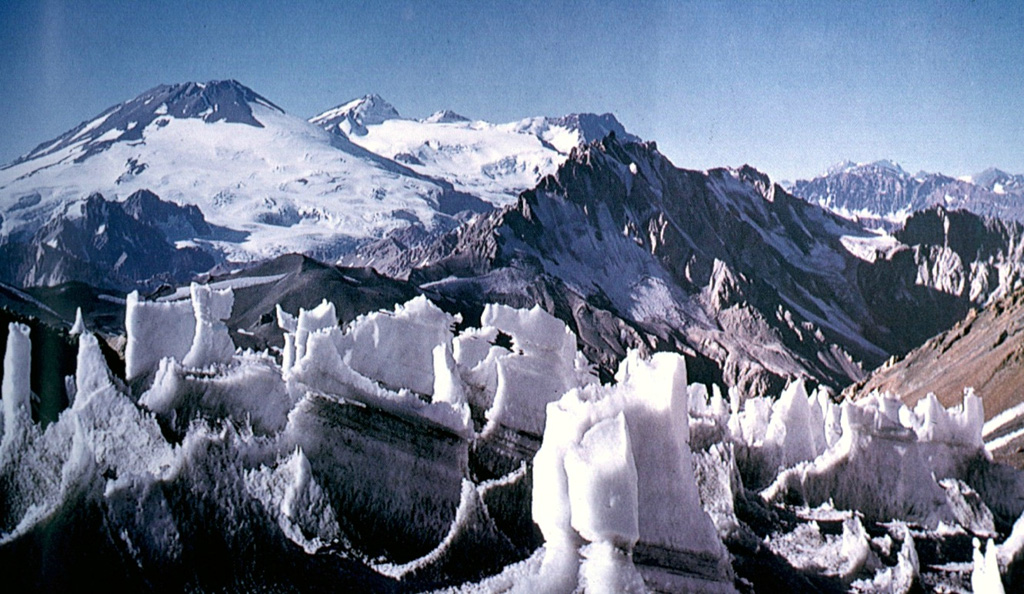Global Volcanism Program | Image GVP-06924

Volcán San José on the far left horizon rises to the north above ice pinnacles at the Nieves Negras pass on the Chile/Argentina border. The summit of San José is formed by a cluster of six Holocene craters, pyroclastic cones, and blocky lava flows that lie within a series of elongated, 0.5 x 2 km wide nested craters. Mild phreatomagmatic eruptions were recorded at San José in the 19th and 20th centuries.
Photo courtesy of Oscar González-Ferrán (University of Chile).
![]() This image is made available under the Creative Commons BY-NC 4.0 license terms.
This image is made available under the Creative Commons BY-NC 4.0 license terms.

San José
